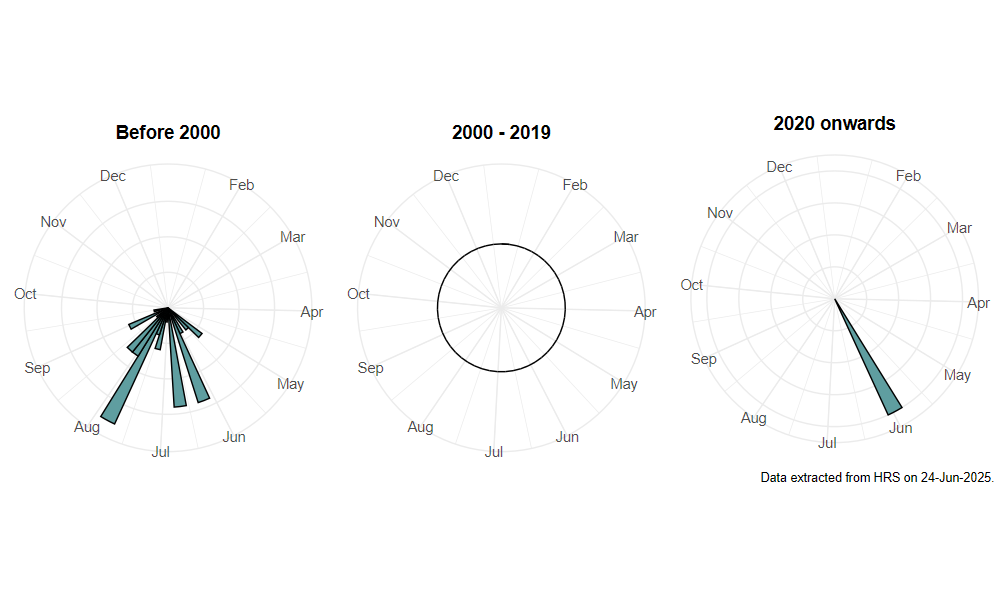Didea alneti (Fallén, 1817)
Identification
Identification difficulty = 5. ![]()
![]() according to Ball & Morris, 20241
according to Ball & Morris, 20241
Biology
The larva is aphidophagous and usually associated with conifers, although it has also been found feeding on other arboreal aphids such as those on Sallow Salix and Lachnus sp. on Oak Quercus. Adults occur in or near woodland, including conifer plantations where they are primarily arboreal, but will descend to visit flowers.
Flight period
The following plots show the number of unique records per week excluding those reported to be of immature stages.

Status
Listed as 'Endangered (RDB1)' by Falk, 19912 and Shirt, 19873, but dropped from this status by Ball & Morris, 20144 who consider it to be a vagrant prone to occasional erruptions during which it manages to establish short lived colonies.
Distribution
This species has an unusual distribution, with a several widely separated areas producing a number of records over a period of a few years (e.g. Forest of Dean in the 1890s, Sutton Park around the turn of the century, Speyside area in 1930s) followed by apparent local extinction. This pattern suggests an occasional migrant or vagrant (or accidental import?) that sometimes establishes temporary populations. The only recent records come from Slaley Forest, a large conifer plantation in southern Northumberland, where it was found twice in 1989.

-
Ball, S., & Morris, R. (2024). Hoverflies of Britain and Ireland. WILDGuides (3rd ed.). Oxford: Princeton University Press. ↩
-
Falk, S. (1991). A review of the scarce and threatened flies of Great Britain. ( No. 39). Research and Survey in Nature Conservation (pp. 1–194). Peterborough: NCC. ↩
-
Shirt, D. (Ed.). (1987). Red Data Books: 2. Insects. Peterborough: NCC. ↩
-
Ball, S., & Morris, R. (2014). A review of the scarce and threatened flies of Great Britain. Part 6: Syrphidae. ( No. 9). Species status (pp. 1–130). Peterborough: JNCC. ↩